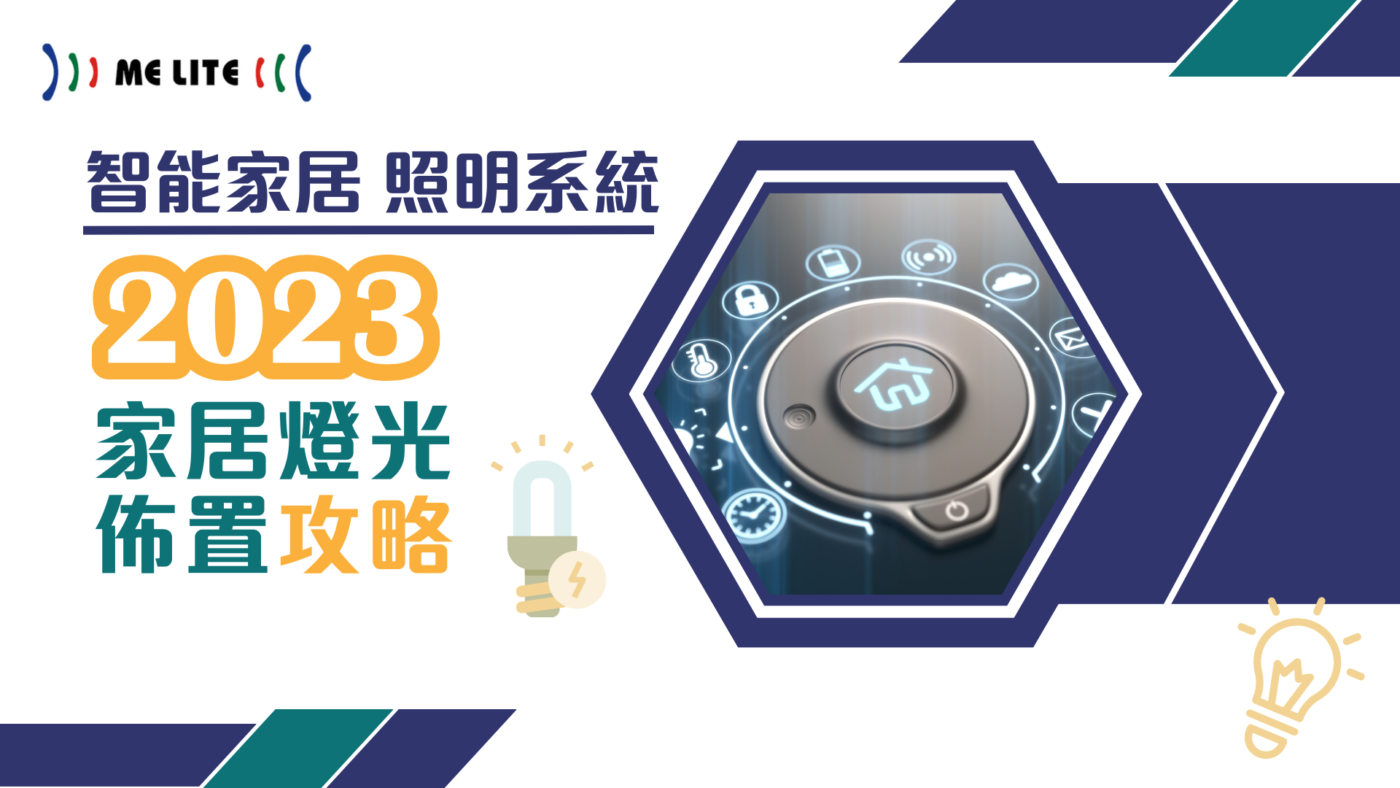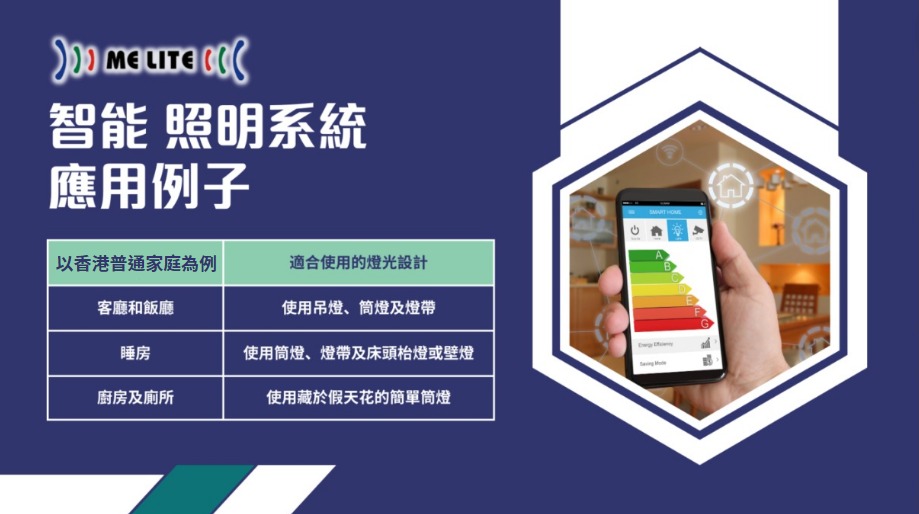【Smart Home Lighting System 】2023 Home Lighting Decoration Tips

【Smart Home Lighting System 】2023 Home Lighting Decoration Tips
In recent years, smart home lighting systems have become more and more popular, and are commonly used in conjunction with smart curtains, smart air-conditioning and smart anti-theft, etc., to combine into a set of home intelligent systems. Smart lighting system not only allows users to control the system switch and brightness through mobile phones or control panels, but also for users to save electricity and create different lighting effects and the atmosphere of the scene, so it is very popular among users.
There are three types of light bulbs in the home: incandescent light bulbs, fluorescent light bulbs (commonly known as fluorescent tubes and compact fluorescent lamps) and LED lights. Incandescent light bulbs produce light energy from red tungsten filaments through the passage of heat. Fluorescent lamps provide better illumination than incandescent bulbs, with a more even and comfortable light. Through ballasts and fluorescent agents inside the tubes, fluorescent lamps produce light more efficiently than incandescent bulbs and are more energy-efficient.LED lamps are more powerful than incandescent bulbs and fluorescent lamps, and can be switched on and off at any time to regulate the brightness and colour temperature. With the advantages of small size, low power consumption and no harmful substances, LED lights have gradually eliminated the traditional incandescent bulbs and fluorescent lamps, and have become the mainstream of lighting fixtures, as well as an indispensable part of the intelligent lighting system.

4 Basic Functions of Smart Home Lighting System
- Smart Lighting for Mobile Phones The Smart Lighting System for LED lamps can be easily connected to a mobile phone via Bluetooth or LAN and control the colour temperature and brightness of the light. Typical colour temperatures range from a warmer 2,700K (yellowish) to a cooler 6,000K (bluish), and brightness ranges from a dimmer 2,800 lumens (lm) to a brighter 3,600 lumens (lm). Users can use their mobile phones to schedule the colour temperature and brightness of the lighting system according to their needs. For example, when working at home during the day, users can adjust the colour temperature to a clearer 5,500K; and before going to bed, users can lower the brightness and warm up the colour temperature, which will help the body to relax slowly and improve the quality of sleep.
- Luminaire Grouping The Intelligent Lighting System also allows you to group different luminaires (e.g. table lamps, downlights, strip lights, etc.) into different groups on your mobile phone for easy management and operation. The same group of lamps can easily perform the same operation, such as switching on/off, adjusting colour temperature and dimming, etc. You can also use the lights to divide your home into different areas. You can also use the light to divide your home into different areas to create different atmospheres. For example, a warm light in the dining room creates a warmer atmosphere, while a clearer light in the study helps you to concentrate on your work. For young people who love video games, you can even adjust the light in the bedroom to a darker, bluish colour.
- Intelligent linkage of scenarios Intelligent Lighting System is not just about mobile phone switching and dimming, it can also be linked and automated with sensors and other intelligent devices on the system (such as smart door locks, smart curtains and smart audio, etc.) to provide users with an unprecedented home experience. Just imagine, when you come home and open the smart door lock, the system will automatically activate and open the smart curtains, turn on the lights to a mild warm light, adjust the room temperature to the most suitable temperature, and finally the smart sound system will welcome the user with the phrase “Welcome home”. Users can also set different scenarios in the system, such as switching off the smart devices at home when they are away from home for work, and wishing them a “Have a nice day” by the smart audio system. Of course, users can also set the system to automatically dim or switch off the lights when the system senses that no one is at home.
- Timed and Delayed Users can set the intelligent system to switch on or off the set scenes at a fixed time in accordance with the user’s daily routine. For example, if a user is going to sleep at 11pm, the lights in the bedroom will gradually become dimmer and yellower from 10.30pm to help the user adjust to his/her daily routine until 11pm when the lights will be completely switched off and the smart curtains will be closed automatically. At the same time, the lights in other areas of the home can also have different effects, such as the living room and dining room lights from 10:00 pm slowly dimming and switching off at 10:30 pm, to help users to rest and relax in an orderly manner.

Traditional and Smart Panels
The control panel of a smart home lighting system has evolved from a traditional panel to a smart panel. Traditional panels are simple on/off circuits that are connected and disconnected by pressing up and down on a switch to control the lights. Smart control panels are touch-sensitive and can be connected to a mobile application, which allows users to control every light in their home and set different lighting combinations for different scenes, colour temperatures and dimming effects, etc. The smart control panel can also be used to control the lighting effects on the screen. Users can also set up lighting scenes for each room or area on the smart panel, such as “Dinner”, “Wine and Chat”, “Reading Time” and “Party”. Whenever there is a suitable activity, just press the panel and the light will automatically adjust the switch, brightness and colour temperature according to the setting.
Household smart switches are generally divided into two types: single line and zero line switches, which provide full-time power to the control panel system, allowing users to control the smart lighting system anytime, anywhere using the panel or mobile phone apps. A single wire switch is a switch that is installed on a fire wire and connected in series with a light bulb to supply power to the system. However, the disadvantages of a single-flame switch are that it is more expensive to produce, the bulb may flicker, and it can only support low-power lighting. On the contrary, Zero Fire Switch is installed on the zero wire (also known as the centre wire) to supply power to the system independently and full-time, which is safer, less costly and can support higher wattage systems than the Single Fire Switch.
Smart switches have the function of wireless communication, and the wireless protocols used generally include ZigBee, WiFi, Bluetooth mesh, Z-wave, PLC carrier, RF, and so on. Together with the wireless network, the smart switch can help the intelligent system to realise multi-mode switching, such as mobile application control, voice control, scene linkage, timer switching and many other functions.

Intelligent Lighting System Application Examples
An ordinary Hong Kong household, for example, usually consists of a living room, a dining room, two bedrooms, a kitchen and a toilet. If the main light is not used, downlights and strip lights can be used in the living room and dining room, while chandeliers, downlights and strip lights can also be used. Bedrooms are usually designed with downlights, strip lights and bedside table lamps or wall lamps. Kitchens and toilets usually use simple downlights hidden in false ceilings.
LED lamps are generally available in two colour temperatures: soft white light and warm yellow light. Users can choose different colour temperatures according to their needs. Soft white light bulbs have a colour temperature of 4,000K or above and provide a bright illumination with a blue-white colour. Soft white light bulbs are generally suitable for commercial use, but in the home environment, they are suitable for working environments such as kitchens, bathrooms, study rooms and home workspaces. Warm yellow light bulbs, with a colour temperature of about 2,800K and a slightly beige light colour, create a soft and warm feeling and are suitable for living rooms, dining rooms and bedrooms.

Advantages of LED Lighting Systems for Smart Homes
Intelligent LED lighting systems are very popular among users because they have many advantages over traditional incandescent bulbs and fluorescent lamps.
- Low Power Consumption LED lamps are more energy efficient than traditional incandescent bulbs and fluorescent lamps. With intelligent switching and dimming, the intelligent system can switch on and off the light fixtures and adjust the light level according to the need, which greatly saves electricity cost.
- Comfort and Health Light affects our health, hormone production and biological clock. The right amount of light also affects our sense of safety and comfort. Adjusting the brightness and colour temperature of our environment can help us to feel comfortable both physically and mentally. For example, we can use white light in the morning so that we can concentrate on our work, and warm yellow light in the evening so that we can relax and get a good night’s rest for tomorrow.
- Versatile operation to meet different needs The control of lighting systems has evolved from traditional up and down switches to intelligent control panels, which can be switched on and off at any time to adjust the brightness and colour temperature of the lights, and with the use of the Internet, the system can be set up and controlled via mobile phones or computers. With the development of Artificial Intelligence technology and different sensors, the home lighting system can be tailored to meet the different needs of users, such as the age of the user, different areas, different times of the day, and set the appropriate light scene for the user to enjoy a smart home.
- Stable and Reliable System The stability and reliability of the system is one of the key factors when choosing home lighting products. With the development of technology, many intelligent lighting products have become very stable. Generally, there are two types of control methods for intelligent lighting systems – Internet and local area network control. Internet is a way of connecting the system with cloud services, while local area network is based on the local network at home, which is a more stable and reliable control method as it is more responsive and less susceptible to the influence of external networks.
Smart home systems have been gradually integrated into our lives, and as the related product solutions become more sophisticated and thoughtful, there are more and more choices.

ME Lite – a Hong Kong brand with its own factory, develops and produces more than 300 high quality LED lighting fixtures and intelligent lighting products, offering a wide range of high energy-saving, high durability, high cost-effective LED lighting products, MELITE also undertakes lighting system projects, providing intelligent LED lighting system solutions, installation and maintenance services for schools, hotels, stadiums and public and private institutions. MELITE also undertakes lighting system projects to provide intelligent LED lighting systems for schools, hotels, stadiums and public and private organisations.
The ME Lite team is professional and careful, and will not be sloppy in doing our part for you and the planet. If you are interested in replacing or purchasing LED lights, please feel free to contact us through the following methods:
Address: Flat E, 5/F, Wang Yip Industrial Centre, 18 Wang Yip Street East, Yuen Long, N.T., H.K.
Telephone:(852) 2477 2911
Fax:(852) 2477 2921
Email:info@meproducts.com.hk

